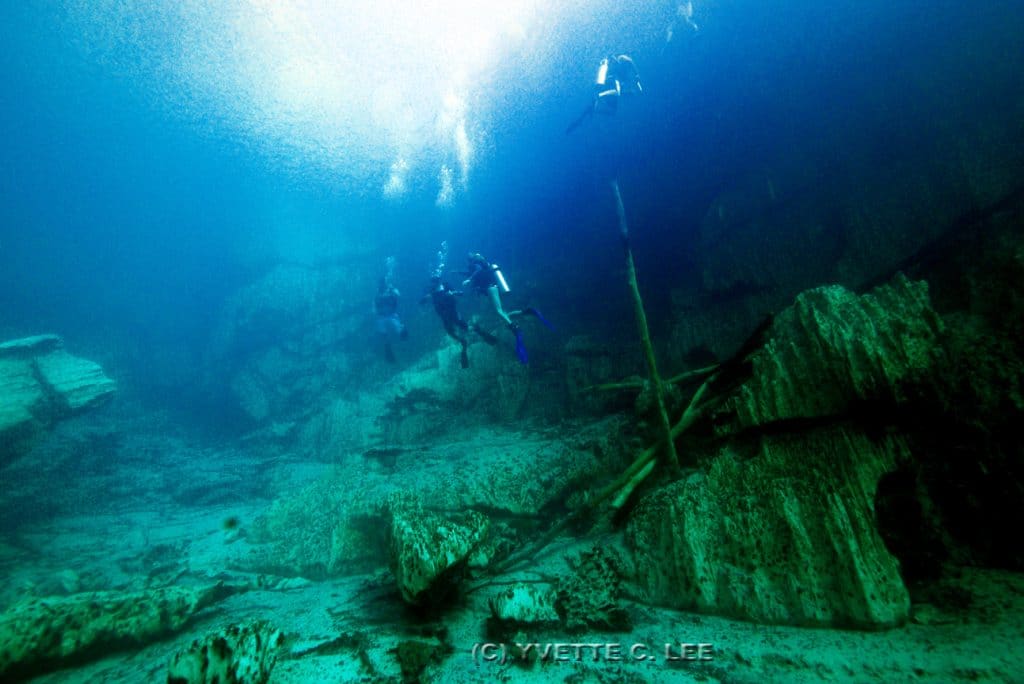If you’re planning to go Scuba Diving in the Philippines and looking for a unique underwater experience, exploring the waters of Barracuda Lake in Coron will give you that and more. The Barracuda Lake is made up of a crater of clear blue waters, about 40m deep and enclosed by dark and sharp limestone cliffs. It is known for its layers of warm and hot water, a.k.a. thermocline.
What you need to know when diving in Barracuda Lake

How did it get its name
The lake is named after the huge barracuda skeleton that was discovered in its depths. Despite its name, there aren’t many barracudas in these waters but there is a big, resident barracuda that likes to conceal itself among the rocks at the far side of the lake.
When is the best time to go diving
One of the great things masteron 100 side effects about diving in Barracuda Lake is that it’s possible to go there all year round. It is advisable to visit early in the morning when the place is not yet crowded.
What to expect
You can reach this place by taking a 20 to 25-minute boat ride from Coron Island. When you arrive close to the entrance of the Barracuda Lake, you’ll see a wooden walkway that will take you through limestone formations. Take advantage of the 10-15 minute hike to appreciate the beauty of nature around you. Prepare yourself for challenging terrain as you climb the limestone cliffs with your gear in tow but the effort is worth it when you reach the site. It’s hard not to be awed as you find yourself surrounded by incredible, majestic rock walls.
Thermocline
Submerging in the waters takes you to a different world where you feel weightless and attuned to the environment. Imagine your body passing between two layers of water that differ in temperature by 10 degrees Celsius. The water temperature during the first 4 meters is a soothing 28 degrees Celsius/82 degrees Fahrenheit. Upon reaching 14 meters, you’ll experience thermocline as the temperature shifts to 38 degrees Celsius/100.4 degrees Fahrenheit.
Halocline
Aside from feeling the dramatic shift in temperature, you’ll also see the semi-transparent boundary between the two bodies of water that somehow resembles an oily membrane that separates the layers. Witnessing this incredible halocline, a zone where waters with different salinity contents meet is probably in the bucket list of many divers.
You’ll feel the water becoming cool again as you come closer to the bottom. At around 34-35 meters, notice how the surrounding waters change from clear blue to brownish hue because of the tannic acid from leaves that fell into the lake.
Another interesting thing in this dive is the 30-meter long cave found near the bottom of the lake. Only experienced divers with proper training can penetrate this cave which is large enough for just one diver to enter at a time. A dive torch or lamp is required when entering the cave and extra care is needed because there are a lot of sediments in the area.
What marine life can you encounter
You can spot groupers, shrimps, gobies, trevally, and sometimes barracudas. You can also encounter dwarf catfish, crayfish, rabbitfish, shells, and occasional batfish, snapper, and pufferfish. These sea creatures find their way from the ocean to the lake through the narrow openings in the limestone cliff walls.
Let your imagination run wild!
The bottom of Barracuda Lake is made up of thick and silty sand. You can play on the soft and silky sand by removing your fins in the shallows. With the weightless feeling and surrounding rocks, you can have a blast imagining yourself walking on the moon.
Join our next Discovery Palawan liveaboard diving for a first-hand sensory experience of this fascinating dive destination.
